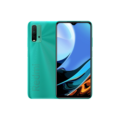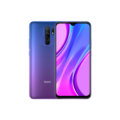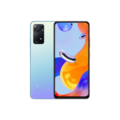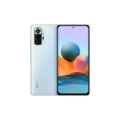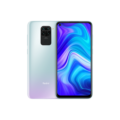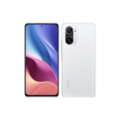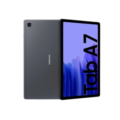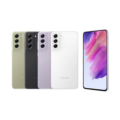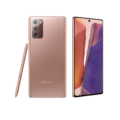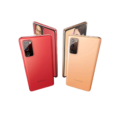Redmi Note 10S Harga Malaysia
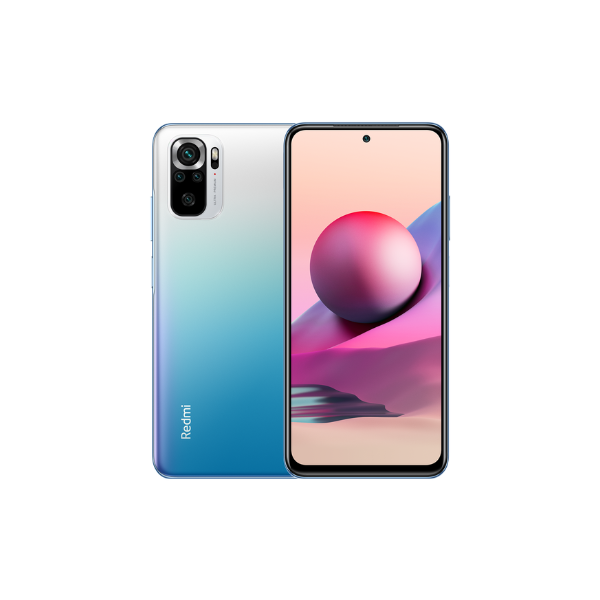

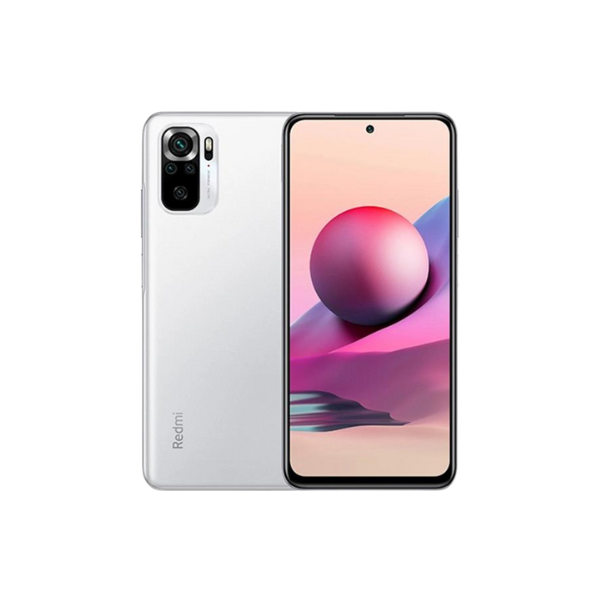
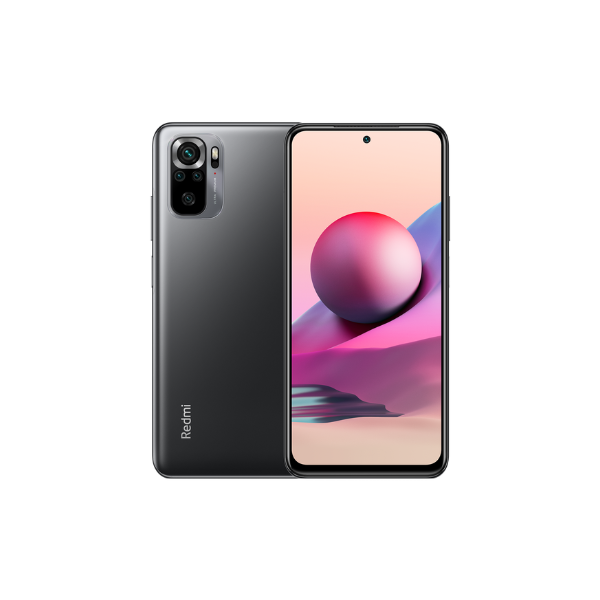
- CPU: Mediatek Helio G95 (12 nm)
- RAM: 4 GB, 6 GB, 8 GB
- Storage: 64 GB, 128 GB
- Display: AMOLED
- Camera: 64 MP Quad Camera
- OS: Android 11, MIUI 12.5
- AnTuTu Total Score: 321.892 (v9)
Redmi Note 10S Harga Malaysia Spesifikasi Malaysia
General
| Device Type | Smart Phone |
| Model | M2101K7BG, M2101K7BI, M2101K7BNY, M2101K7BL |
| Announced | 04 March, 2021 |
| Released | 28 April, 2021 |
| Status | Available |
| Price | RM645 - RM719 |
Design
| Type <strong>Design Type</strong> called form factor refers to a mobile phone's size, shape, and style as well as the layout and position of major components of phone. There are three major form factors seen in mobile phones => bar phones, folding phones and sliding phones. | Bar |
| Dimensions | 160.5 x 74.5 x 8.3 mm (6.32 x 2.93 x 0.33 in) |
| Weight | 178.8 g (6.31 oz) |
| Protection | IP53, dust and splash resistant |
| Colors | Deep Sea Blue (Ocean Blue), Shadow Black (Onyx Gray), (Frost White) Pebble White |
Network
| 4G Network | 1, 2, 3, 4, 5, 7, 8, 20, 28, 38, 40, 41 |
| SIM <strong>SIM</strong> (Subscriber Identity Module) is a small card that contains mobile network subscriber's account information. This allows the phone using the card to attach to a mobile network. The SIM card is most commonly associated with GSM and UMTS mobile networks. Moving a SIM card from one phone to another allows a subscriber to switch mobile phones without having to contact their mobile network carrier. SIM cards can also be used by a phone to store limited amounts of data, such as phone numbers and text messages. | Nano SIM |
| Dual SIM | dual stand-by |
Display
| Display Type <strong>Display Technology => </strong> A number of display technologies and types used in mobile phones => TFT (Thin Film Transistor), IPS (In-Place Switching), OLED (Organic Light Emitting Diode), AMOLED (Active-Matrix Organic Light-Emitting Diode), Super AMOLED (an even advanced version of AMOLED), Resistive Touchscreen (Resistive touchscreens contain two layer of conductive material with a very small gap between them which acts as a resistance), Capacitive Touchsceen (Capacitive touchscreen technology consists of a layer of glass coated with a transparent conductor) | AMOLED |
| Size | 6.43 inches, 99.8 cm2 (~83.5% screen-to-body ratio) |
| Resolution | 1080 x 2400 pixels, 20:9 ratio |
| Display Colors <strong>Display Colors</strong> is refers to the number of different shades of colors that the screen is capable of displaying => 64K colors, 256K colors and 16 million colors, Obviously 16M is highest available range of colors and better than others. | 16 Millions Colors |
| Pixel Density <strong>Pixel Density (PPI)</strong> is refers to the concentration of pixels on a particular display, measured in pixels per inch (ppi). Pixel density is calculated by dividing the diagonal pixel resolution of a display by its diagonal size, higher pixel density better display quality. | (~409 ppi density) |
| Touch Screen | Yes, Multitouch |
| Display Protection <strong>Display Protection => </strong> Gorilla Glass is a special alkali-aluminosilicate glass shield with exceptional damage resistance that helps protect mobile displays from scratches, drops, and bumps of everyday use, It is always better to go for a smartphone with Gorilla Glass for that added protection and peace of mind. | Corning Gorilla Glass 3 |
| Features |
450 nits (typ) 1100 nits (peak) |
Camera
| Rear Camera <strong>Camera</strong> is able to capture photographs and usually videos, The most important characteristics of a camera are the resolution (measured in megapixels), lens focus type (fixed or automatic), higher megapixel cameras are known to capture higher quality photos, but not always a good measurement of the photos quality. |
Quad Camera 64 MP, f/1.8, 26mm (wide), 1/1.97&amp;quot;, 0.7µm, PDAF 8 MP, f/2.2, 118˚ (ultrawide), 1/4.0&amp;quot;, 1.12µm 2 MP, f/2.4, (macro) 2 MP, f/2.4, (depth) |
| Front Camera | 13 MP, f/2.5, (wide), 1/3.06&amp;quot;, 1.12µm, 1080p@30fps |
| Image | 2160p |
| Video | 4K@30fps, 1080p@30/60/120fps, 720p@960fps |
| Camera Features | LED flash, HDR, panorama |
Software
| Operating System <strong>OS => </strong> Every computer system run on a base software called Operating System (OS). Operating System controls all basic operations of the computer (such as smartphone, PDAs, tablet computers and other handheld devices). The Operating System allows the user to install and run third party applications (apps), apps are used to add new functionality to the device. | Android 11 |
| User Interface <strong>UI</strong> or user interface of a device is the look and feel of the on-screen menu system. How it works, its color scheme, how it responds to button presses, all of these things are part of the user interface. | MIUI 12.5 |
Hardware
| Chipset <strong>Chipset</strong> is a group of integrated circuits designed to perform one or a more dedicated functions, often with real time computing constraints, Popular smartphones are equipped with more advanced embedded chipsets that can do many different tasks depending on their programming. | Mediatek Helio G95 (12 nm) |
| CPU <strong>CPU</strong> (Central Processing Unit) mostly known as processors, CPU processes instructions in order to carry out certain functions that make your device operate properly. Processors are often described as the brain of computers, smartphones and tablets, Smartphones and tablets rely on processors to carry out their every task, Processors are an incredibly important factor in selecting any type of computing device, including your smartphone. | Octa-core (2x2.05 GHz Cortex-A76 & 6x2.0 GHz Cortex-A55) |
| GPU <strong>GPU</strong> (Graphics Processing Unit) is a single-chip processor designed to rapidly manipulate and alter memory to accelerate the creation of images in a frame buffer intended for output to a display, This includes things such as lighting effects, object transformations, and 3D motion. | Mali-G76 MC4 |
| RAM (Memory) <strong>RAM</strong> (Random Access Memory) is a type of computer memory that can be accessed randomly, any byte of memory can be accessed without touching the preceding bytes that allows information to be stored and accessed quickly from random locations. RAM is the most common type of memory found in computer systems, smartphones, tablets and other electronic devices. | 4 GB, 6 GB, 8 GB |
| Internal Storage <strong>Internal Storage</strong> is a data storage space (flash memory) mostly used in smartphones, tablets and other electronic devices where operating system, apps, music, photos, videos, files and other user data Is stored. | 64 GB. 128 GB |
| Card Slot <strong>Memory Card Slot</strong> is a special slot for inserting a memory card. Memory cards allow you to expand the phone's built-in memory, A memory card (sometimes called a flash memory card or a storage card) is a small storage medium used to store data such as text, pictures, audio, and video, for use on small, portable or remote computing devices such as mobile phones, mp3 players, digital cameras. | microSDXC (dedicated slot) |
| Sensors <strong>Sensors</strong> are electronic components that detects and responds to some type of input from the physical environment. The specific input could be light, heat, motion, moisture, pressure and location, The output is generally a signal that is converted to use in computing systems, a location sensor, such as a GPS receiver is able to detect current location of your electronic device. |
Fingerprint (side-mounted), accelerometer, gyro, compass Virtual proximity sensing |
Battery
| Battery Type <strong>Battery Type => </strong> Cell phones run on various kinds of batteries depending on the manufacturer, phone size or shape and features. There are basically four types of cell phone batteries => Lithium Polymer, Lithium Ion, Nickel Metal Hydride and Nickel Cadmium. | Li-Poly (Lithium Polymer) |
| Placement | non-removable |
| Capacity <strong>Battery Capacity</strong> is a measure (typically in Amp-hr) of the charge stored by the battery, and is determined by the mass of active material contained in the battery. The battery capacity represents the maximum amount of energy that can be extracted from the battery under certain conditions. | 5000 mAh |
| Charging | 33W wired |
Connectivity
| Bluetooth <strong>Bluetooth</strong> is a wireless communications technology for exchanging data between mobile phones, headsets, computers and other network devices over short distances without wires, Bluetooth technology was primarily designed to support simple wireless networking of personal consumer devices. | 5.1, A2DP, LE |
| Wi-fi <strong>Wi-Fi</strong> is a popular wireless networking technology using radio waves to provide high-speed network connections that allows devices to communicate without cords or cables, Wi-Fi is increasingly becoming the preferred mode of internet connectivity all over the world. | Wi-Fi 802.11 a/b/g/n/ac, dual-band, Wi-Fi Direct |
| Wi-fi Hotspot | |
| USB | USB Type-C 2.0 |
| GPS <strong>GPS</strong> The Global Positioning System is a satellite-based radio navigation system, GPS permits users to determine their position, velocity and the time 24 hours a day, in all weather, anywhere in the world, In order to locate your position, your device or GPS receiver must have a clear view of the sky. | GPS, GLONASS, GALILEO, BDS |
| NFC <strong>NFC</strong> (Near field communication) is a set of standards for smartphones and similar devices to establish peer-to-peer radio communications with each other by touching them together or bringing them into proximity, usually no more than a few inches. | |
| Wireless Charging <strong>Wireless Charging</strong> (Inductive Charging) uses an electromagnetic field to transfer energy between two objects. This is usually done with a charging station. Energy is sent through an inductive coupling to an electrical device, which can then use that energy to charge batteries or run the device. | No |
Media
| Loudspeaker | Yes, with stereo speakers |
| Handsfree | 3.5mm jack |
Redmi Note 10S muncul selepas siri kemunculan peranti Redmi Note 10 dan Redmi 10 Pro, dan anda boleh mendapatkannya dengan harga sekitar RM 656.
Ini adalah salah satu jenis telefon pintar yang merupakan terobosan baru dari Xiaomi yang dianggap berbeza dari standard biasa, dan memberi tumpuan kepada prestasi yang optimum apabila digunakan untuk bermain permainan seperti PUBG, FIFA atau Call of Duty yang memerlukan kapasiti besar dan sokongan daripada spesifikasi Redmi Note 10S.
Redmi Note 10S hadir dalam pelbagai warna, termasuk putih, ungu, hitam, dan biru laut yang agak menarik.
Reka Bentuk dan Binaan
- Lubang Soket untuk peranti fon kepala
- Berat 178.8 g, dan saiz 8.3mm
- Skrin menggunakan IP53
Redmi Note 10S hadir dalam pelbagai warna termasuk Redmi Note 10S putih dan Redmi Note 10s biru. Terdapat sedikit cap jari magnet yang kelihatan dan IP53 ini mampu bertahan dari percikan air atau tekanan sama seperti telefon Xiaomi secara umum.
Ciri yang mempunyai fungsi dwi, iaitu lubang headphone 3.5mm yang juga berfungsi sebagai pemancar IR, yang merupakan ciri khas telefon Xiaomi.
Beratnya lebih ringan daripada penerbitan sebelumnya, tetapi lebih tebal. Telefon ini dianggap cukup moden dan sangat mudah digenggam walaupun dengan saiz skrin 6.43 ia dianggap agak besar.
Anda dapat menjumpai pemindai cap jari di sisi peranti yang sangat dekat dengan butang daya supaya anda dapat menggunakannya dengan sangat mudah dan mudah dijangkau oleh jari anda.
Xiaomi Redmi Note 10S ini mempunyai pelbagai pilihan warna yang mewakili reka bentuk Redmi yang akan dilancarkan pada tahun 2024, dan kualitinya memang sepadan dengan harga yang dibayar.
Kamera
- Penderia utama dengan kapasiti 64MP
- 8MP dengan keupayaan ultra-lebar
- Kamera makro dengan kedalaman hingga 2MP
- Kamera selfie dengan kapasiti 13MP
Apabila anda membuat ulasan mengenai Redmi Note 10S, anda mungkin memang akan melihat peranti ini dengan kamera empat penderia, tetapi pada hakikatnya kualitinya tidak jauh berbeza daripada kamera dua penderia yang sekurang-kurangnya berada pada tahap yang sama dengan Redmi Note 10 Pro.
Kamera utama adalah 64MP, ia mempunyai sensor ultra-lebar dengan kapasiti 8MP, serta penambahan sensor makro dan juga kehadiran kedalaman kembar 2MP. Terdapat kamera yang dipasang di bahagian hadapan peranti dengan kapasiti 13MP yang boleh dilihat di bahagian depan skrin.
Kamera utama dengan kapasiti 64MP boleh menghasilkan prestasi yang sangat baik apabila anda mengambil gambar pada jarak dekat dan juga apabila mengambil gambar dalam mod potret. Tetapi jangan terkejut melihat hasil gambar lanskap kerana hasilnya tidak begitu baik, terdapat beberapa kekurangan dari segi butiran.
Perisian
- Versi MIUI 12.5
- Sistem operasi Android 11
- Bloatware dan pelbagai aplikasi
Redmi Note 10S ungu pertama kali dilancarkan di India. Redmi Note 10S menggunakan versi MiUI 12.5 dan menggunakan Android 11.
Penambahbaikan ini dianggap cukup signifikan jika dibandingkan dengan versi MIUI 11 kerana ia mula beralih ke sistem Android, dengan penyesuaian yang masih sama dan utuh untuk Xiaomi.
Prestasi
- Versi cipset Mediatek Helio G95
- Kapasiti RAM 6GB
- Memori dalaman sehingga 128GB
Anda mungkin merasa pelik apabila sedar bahawa Redmi Note 10S menggunakan cipset Mediatek Helio versi G95 dan pemproses yang sebelumnya disertakan dalam Redmi Note 8 Pro.
Cip ini mempunyai jenis 12nm yang menggunakan senibina octa-core dan menggunakan unit pemprosesan grafik atau GPU versi Mali G76 MC4. Tambahan pula dengan ketersediaan RAM 6GB dan juga penyimpanan jenis UFS 2.2 dengan kapasiti 128GB dengan sokongan untuk pengembangan menggunakan memori tambahan menggunakan kad microSD.
Keanehan ini disebabkan oleh jenis terkini daripada Xiaomi yang baru saja dilancarkan telah menggunakan Qualcomm Snapdragon, manakala ini tidak. Mediatek dianggap telah membuat kesalahan dengan penggunaan berlebihan RAM DDR4x yang membuat permainan berjalan agak paksa.
Penggunaan harian normal juga cukup lancar, malah dapat digunakan apabila dua aplikasi berjalan pada masa yang sama. Anda boleh menggunakan fungsi multitugas untuk membuka puluhan aplikasi, walaupun apabila bertukar tab dari satu tab ke tab lain dalam Chrome, ini juga boleh dilakukan dengan mudah dan lancar.
Bateri
- Kapasiti 5000mAh
- Jenis USB C
- Model pengecasan 33W
PCMark melakukan ujian untuk daya tahan bateri ini, dan Redmi 10S dapat bertahan selama 13 jam, 19 minit dan ini menunjukkan prestasi yang lebih baik daripada jenis telefon lain.
Apabila terdapat ujian penggunaan sebenar, bateri masih boleh bertahan sehingga ke hari berikutnya dengan sekurang-kurangnya 30 peratus bateri yang tinggal. Bateri dengan kapasiti 5000mAH menjadikannya bertahan lebih lama daripada jenis Redmi 10 Pro, tetapi dengan kadar 60Hz ia akan terasa sangat boros.
Harga
Jika anda mencari pasaran yang baik, anda boleh mendapatkan harga Redmi Note 10S sekitar RM 645 hingga RM 719.
Anda boleh mencari produk ini di kedai rasmi Xiaomi di Lazada
Soalan Lazim
Bagaimana cara saya mengakses NFC dalam Redmi Note 10S?
Berdasarkan kawasan tertentu, anda boleh mendapatkan versi peningkatan Redmi Note 10S dengan membayar 20 dolar lebih.
Bagaimana kualiti audio Redmi Note 10S?
Ia cukup baik tetapi lebih baik menggunakan fon kepala untuk mendapatkan kualiti audio yang terbaik.
Adakah Redmi 10S menyokong 5G?
Tidak, ia hanya untuk 4G. Malangnya, Redmi 10s tidak menyokong rangkaian 5G lagi.

